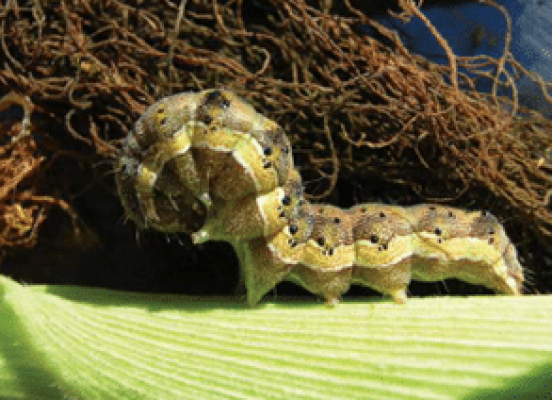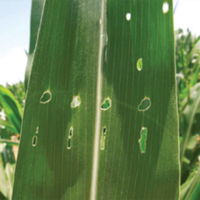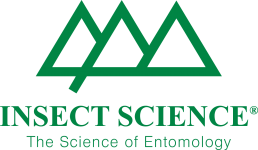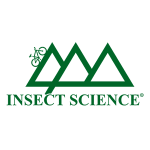The extent of the damage depends on the stage of development of the crops when bollworm eggs are laid. If bollworms feed only on the tips of ears after pollination, damage is not severe. When larvae damage silks to such an extent that pollination cannot occur, it can contribute to direct yield loss.
Life history
Moths are nocturnal and lay eggs singly near or on maize ears. One female can lay more than 1000 eggs during her lifespan. Prior to mating and laying eggs, moths feed on nectar and other sources of sugar in the environment. Eggs hatch within 3-5 days. Larvae moult 5-6 times, during which they change colour. The larval stage lasts for approximately one month. When fully grown, they migrate from where they fed on the maize ear and burrow 60-100 mm deep into the soil where they pupate. The pupal stage lasts for about two weeks but, in cooler environments such as the Highveld region of South Africa, may last longer during winter when pupae enter a dormant stage. This explains a peak in moth flights that usually occurs during August to October in areas with cold winters. In areas with mild winters and long warm summers where a succession of crops is grown under irrigation, bollworm generations succeed one another at short intervals. When pupae do not go through a dormant stage, the insect takes about 50 days to complete its life cycle.
Natural enemies
Bollworm eggs and larvae are attacked by various parasitic flies, wasps and other natural enemies. In addition, larval populations are sometimes suppressed by bacteria and a polyhedrosis virus. Bollworms infected with the virus are inactive and do not feed, usually have a puffy appearance and lie on the upper surface of leaves or hang upside down from plants. The efficacy of the virus increases when the temperature and humidity are high, resulting in total eradication of severe bollworm infestation within days. However, natural enemies are not always able to suppress outbreaks of this pest.
Management
Although cultivation during winter can kill pupae in the soil this practice is not recommended as a general measure, as bollworm outbreaks are sporadic and only occur in isolated areas. Insecticide application in fields where large numbers of bollworm eggs are observed is not justified, since up to 90% of these eggs do not hatch or are killed by natural enemies. If it is necessary to control bollworm, insecticides should only be applied during the larval stage. Chemical control should be planned properly since unnecessary and long term application of insecticides may lead to development of insecticide resistant populations of bollworm.






